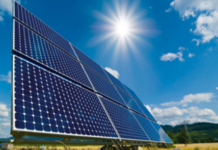
Andrew Burger of Microgrid Media looks at international developments in solar power. In particular, mini and micro-grids are key for emerging economies. In Bangladesh, Pakistan, Indonesia, and more, people are taking advantage of cheap renewables.
Some 1.4-2 gigawatts (2GW) of small-scale solar power systems (<1MW) have come online in emerging economies since January 2015, according to Bloomberg New Energy Finance’s (BNEF) inaugural quarterly “Q1 2017 Off-Grid and Mini-Grid Market Outlook.”
Small enough to be deemed insignificant by conventional power market and investment standards, off-grid solar-storage mini- and microgrids now account for a significant and still growing share of electrification taking place in a diverse range of populous countries around the world – from Peru, Pakistan and Yemen to island nations including the Dominican Republic, Samoa, Fiji and Indonesia.
Chinese PV manufacturers dominate the market for PV solar modules, accounting for 70 percent of global production. Illustrating how fast and far distributed local solar energy use has grown, imports by emerging economies accounted for one-third – 6.8 GWs worth — from 1Q-3Q 2016. That’s $3 billion worth in U.S. dollar terms, a year-over-year rise of 20 percent, BNEF highlights.
Solar Rooftops, Farms and Rural Communities
Pakistan and Nigeria have emerged among the largest off-grid solar-storage mini- and microgrid markets among emerging economies. Pakistani and Nigerian imports of PV solar modules from China totaled $276 million and $23 million, respectively, in 2016. That’s far more than needed for the two nations’ respective utility-scale solar PV project pipelines, according to BNEF. Furthermore, sales of integrated or plug-and-play solar kits were not included in the numbers.
Rooftop and solar-storage mini/microgrids are also taking root and growing across South Asian countries —Bangladesh, Nepal and India, as well as Pakistan.
On the supply side, battery energy storage companies are helping fuel development and growth of solar mini- and microgrid markets in emerging economies, particularly in Africa, which has emerged as a hotbed of activity.
By the Numbers: BNEF 1Q 2017 Emerging Economy Off-Grid Markets
- $3 billion PV exports from China to emerging markets from January-October 2016
- $142 million of branded off-grid solar lighting kits sold in 1H 2016
- 21 MW of PV community mini-grids announced since April 2016
- 4.3 million branded solar lanterns sold in 1H 2016, a gain of 48 percent from 1H 2015, according to the World Bank Group-led Global Off-Grid Lighting Association (GOGLA).
Highlighting growing interest in Africa’s growing roster of mobile pay-go solar startups, in 4Q 2016 Africa-focused private equity firms invested over $60 million in Nigerian mobile pay-go solar provider Mobilsol and Netherlands-based Lumos Global, which is selling emissions-free electricity services from solar-storage microgrids in Nigeria.
Nonetheless, multilateral and national development agencies continue to provide the bulk of the capital mobile pay-go solar start-ups require, BNEF points out. The Asian Development Bank (ADB), for instance, announced it would extend loans totaling $1.1 billion or more to fund distributed energy initiatives in India, Pakistan and Sri Lanka, including $325 million for off-grid electrification in Pakistan,” according to the clean energy and tech market research specialist.
The Rise of Local Distributed Solar Energy Markets
Energy and power market reform – most notably the institution of new regulations geared towards opening markets to competition from distributed local and self renewable power generation – continues to be a key driver for off-grid solar-storage mini- and microgrid growth, as well as efforts to achieve national and UN climate change and sustainable development goals (SDGs).
National solar, renewable energy and rural electrification policies and programs are another keystone for market development and growth.
Part and parcel of Nigeria’s rural electrification strategy and draft regulations, distributed generation, specifically solar-storage mini- and microgrids, figure to play a big part. Able to obtain a copy of the National Electricity Regulatory Commission’s draft regulatory regime, BNEF’s bullet-point synopsis can serve as a model for other emerging, as well as industrially developed countries.
Nigeria’s new energy regulations draft recognizes three distinct type of mini-grids:
- Off-grid mini-grids less than 100 kW;
- Those from 100 kW-1 MW; and
- Connected mini-grids deployed in areas of weak grid supply.
And focus on the following, BNEF summarizes:
- Retail tariffs determined by site-specific cost-plus approach (rather than a uniform grid tariff);
- Compatibility standards distributed networks that would allow eventual integration with the national grid;
- An exit option for investors at pre-agreed valuations for mini-grids that are subsequently absorbed into the main grid.
Source: https://energytransition.org/


















